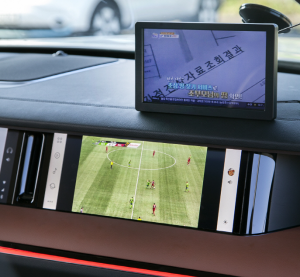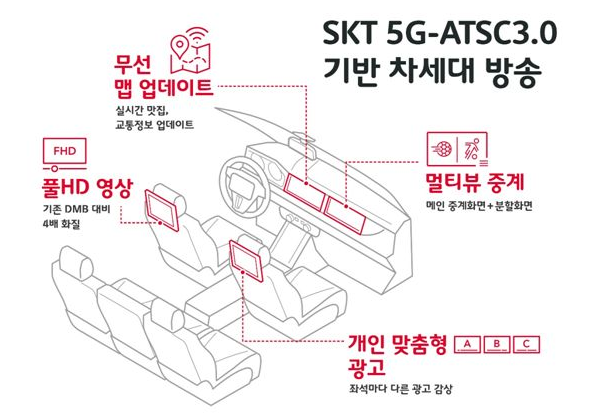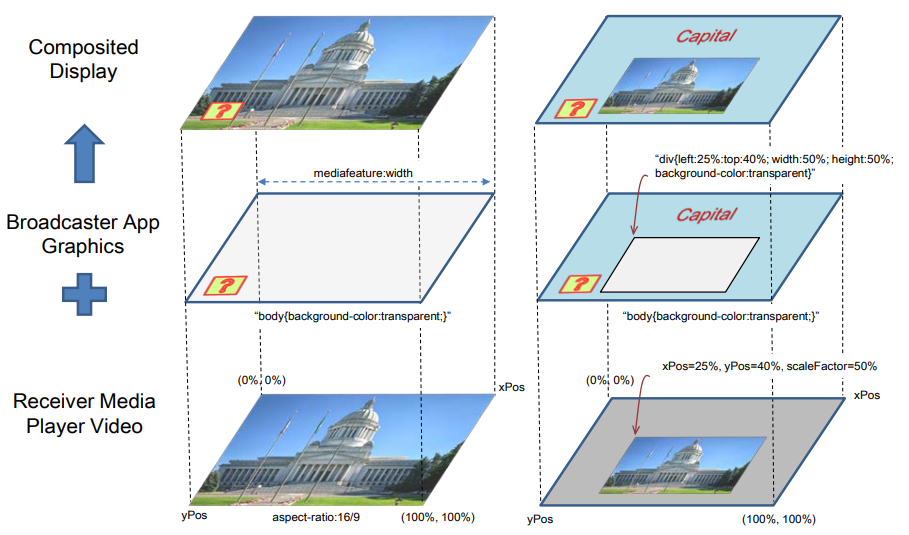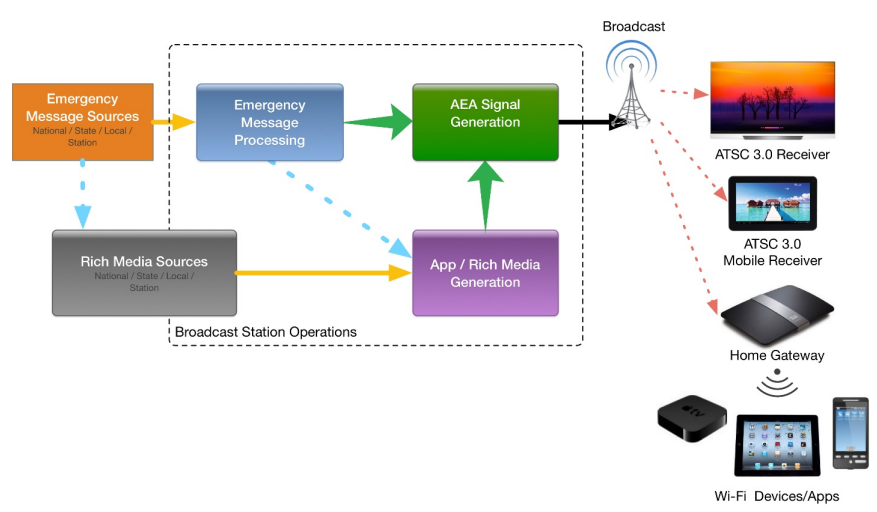ATSC was formed in 1982 by the member organizations of the Joint Committee on InterSociety Coordination (JCIC): the Electronic Industries Association (EIA), the Institute of Electrical and Electronic Engineers (IEEE), the National Association of Broadcasters (NAB), the National Cable Telecommunications Association (NCTA), and the Society of Motion Picture and Television Engineers (SMPTE). Currently, there are approximately 150 members representing the broadcast, broadcast equipment, motion picture, consumer electronics, computer, cable, satellite, and semiconductor industries.
ATSC Digital TV Standards include digital high definition television (HDTV), standard definition television (SDTV), data broadcasting, multichannel surround-sound audio, and satellite direct-to-home broadcasting.
ATSC 3.0 standard is designed to deliver improvements in performance, functionality and efficiency so substantial to warrant implementation of a non-backwards-compatible system. The IP-based standard, with its higher throughput capacity, can deliver:
- Enhanced quality for audio and video services
- Robust mobile reception on a wide range of devices
- Improved spectrum efficiency
- AEA(Advanced Emergency informAtion)
- Personalization features
- Interactive capabilities
In 5G, the wider bandwidth will enable for broadcasters to deliver high quality audio and video in almost real-time. Below picture shows the example of next gen TV based on ATSC 3.0 and 5G that shows the case of watching high quality multimedia content in vehicle.
Source: SK Telecom - In-vehicle entertainment based on ATSC 3.0 and 5G in South Korea
In addition, 5G TV can have a power to provide return-path data to Broadcasters - it means Broadcast TV will know what you're watching. In terms of advertiser's point of view, targeted advertising can be implemented by help of that return-path data. Broadcasters Ads specific to your viewing habits and income level could get slotted in by your local station. This is something brand-new for broadcast TV.
- The legacy over-the-air broadcasts are the one way to watch television that does not track your viewing habits.
- Return-path data will enable you to have more choices: alternative audio tracks and interactive elements
Source: LG U+ 5G Service - Multi view point broadcasting service in South Korea
Source: Sorenson Media - Dynamic Ads Replacement
Below diagram shows how to combine application with broadcast stream together that is already implemented in common Smart TV on the market: the partners can implement all the necessary things easily in HTML5.
Source: https://www.atsc.org/wp-content/uploads/2017/12/A344-2017-Interactive-Content.pdf
Following diagram shows how ATSC 3.0 AEA(Advanced Emergency informAtion) system enables broadcasters to deliver timely, in-depth emergency related information to their viewers, which can strengthen the connection between the audience and the station and provide critical information in times of need.
Even though 5G TV technology foundation is already ready, and network infrastructure is not fully ready, however will be no dominant leader who leads that ecosystem as of June 2019. In terms of Broadcaster's point of view, it will be definitely new opportunity can make other revenue source, but it requires some sort of investments - the legacy broadcaster having no investment won't get any benefits on 5G TV ecosystem.
I am curious what we will experience in near future by 5G TV.





